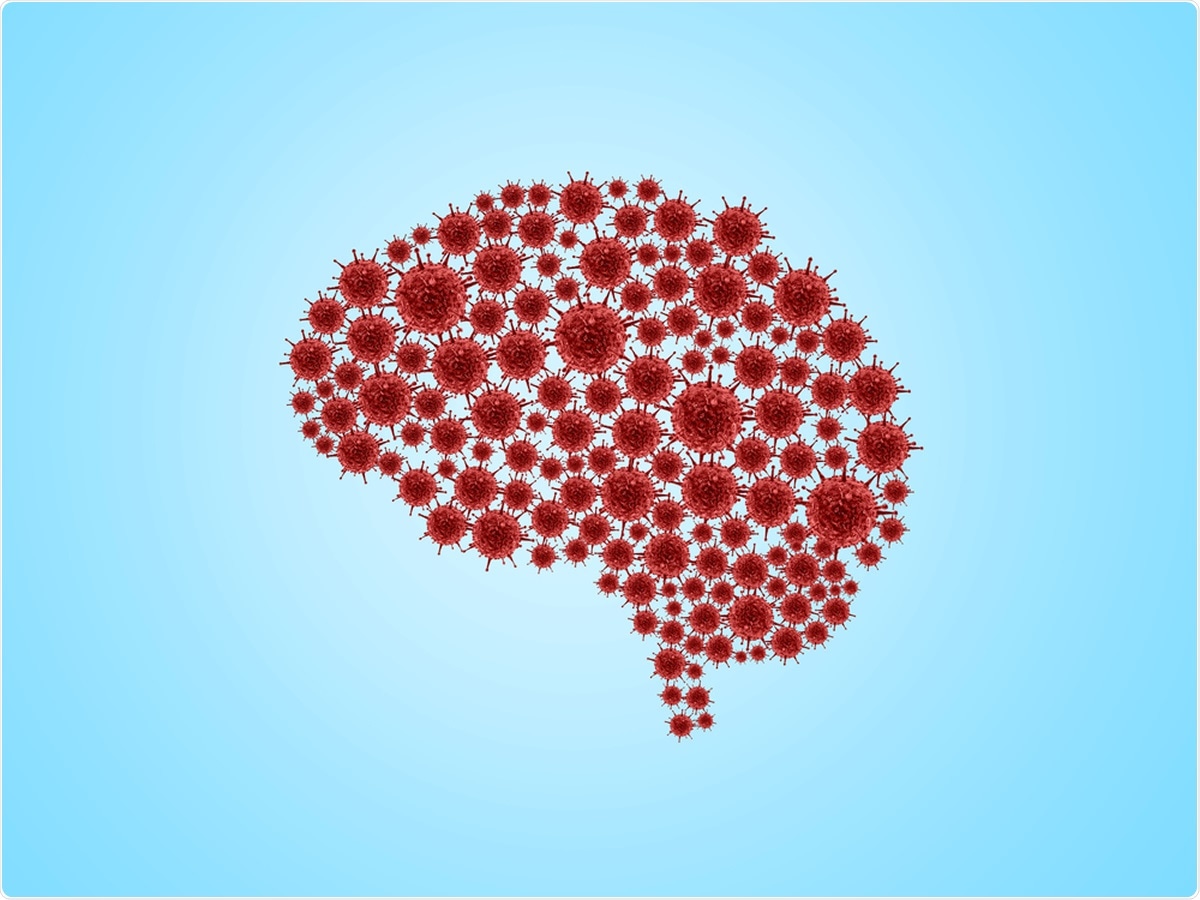Impact of COVID-19 on mental health in the US: CDC report
Large disease outbreaks have been associated with mental health problems. The current coronavirus disease (COVID-19) pandemic, caused by the severe acute respiratory syndrome coronavirus 2 (SARS-CoV-2), has negatively impacted millions of people worldwide, with many losing their jobs, businesses, and even loved ones.
The spread of disease and increase in the death toll during a large outbreak is associated with fear and grief. Social restrictions and isolation may increase the risk for mental health problems.
Researchers from the National Center for Health Statistics and the United States Centers for Disease Control and Prevention (CDC) found that recent symptoms of anxiety and depression increased during the pandemic, particularly between August 2020 and February 2021.
The study, published in CDC's Morbidity and Mortality Weekly Report (MMWR), underlies the importance of evaluating the impact of strategies addressing adult mental health status during the pandemic. This way, these can help plan strategies and interventions for the affected groups.

Mental health issues and the pandemic
The pandemic continues to wreak havoc across the globe, infecting more than 128 million people worldwide. To date, more than 2.8 million people have died due to COVID-19.
The pandemic has caused social restrictions and measures to reduce the virus's spread, including non-essential businesses' closure. As a result, many people lost their jobs. Unemployment, the loss of a loved one, being infected with COVID-19, and the pandemic's global impact increased the risk of mental health issues.
The study
The U.S. CDC teamed up with the U.S. Census Bureau to perform the Household Pulse Survey (HPS), a report describing trends in the prevalence of symptoms of an anxiety disorder or a depressive disorder among adults. The partnership aims to rapidly monitor mental health status changes and access to care during the COVID-19 pandemic.
The HPS is a rapid-response online survey that used a probability-based sample design to gauge the pandemic's social and economic impact on households in the U.S.
Further, questions on mental health symptoms were taken from the validated Patient Health Questionnaire for depression and anxiety. The typical questions included if the patient experienced symptoms, such as feeling nervous or anxious, unable to stop worrying, having little interest in doing activities, and feeling depressed, down, or hopeless during the past seven days.
Those who had symptoms of anxiety and depression that occurred more than one-half of the days or nearly every day were noted to have symptoms. Also, the respondents were asked if they had taken a prescription medication for their mental health problem during the past four weeks, received counseling or therapy from a health practitioner, or needed but did not receive counseling or treatment.
The team found that between August 19, 2020, and February 1, 2021, the number of people who experienced symptoms of anxiety or depression during the past seven days increased from 36.4 percent to 41.5 percent. Those who reported they needed but did not receive mental health counseling in the past four weeks increased from 9.2 percent to 11.7 percent.
The increased numbers were more prominent in adults between the ages of 18 and 29 and those with less than high school education.
The team noted that using the HPS data can help evaluate the impact of strategies to address mental health among adults during the pandemic. The study findings can guide interventions for groups that are disproportionately affected by the global health crisis.
"Continued near real-time monitoring of mental health trends by demographic characteristics is critical during the COVID-19 pandemic," the researchers concluded in the study.
"These trends might be used to evaluate the impact of strategies that address mental health status and care of adults during the pandemic and to guide interventions for groups that are disproportionately affected," they added.
- Vahratian, A., Blumberg, S., Terlizzi, E,, and Schiller, J. (2021). Symptoms of Anxiety or Depressive Disorder and Use of Mental Health Care Among Adults During the COVID-19 Pandemic — United States, August 2020–February 2021. Morbidity and Mortality Weekly Report (MMWR). https://www.cdc.gov/mmwr/volumes/70/wr/mm7013e2.htm?s_cid=mm7013e2_w#contribAff
- COVID-19 Dashboard by the Center for Systems Science and Engineering (CSSE) at Johns Hopkins University (JHU) – https://gisanddata.maps.arcgis.com/apps/opsdashboard/index.html#/bda7594740fd40299423467b48e9ecf6
Posted in: Child Health News | Men's Health News | Medical Research News | Medical Condition News | Women's Health News | Disease/Infection News
Tags: Anxiety, Anxiety Disorder, Coronavirus, Coronavirus Disease COVID-19, Depression, Depressive Disorder, Education, Health Care, Mental Health, Mortality, Pandemic, Respiratory, SARS, SARS-CoV-2, Severe Acute Respiratory, Severe Acute Respiratory Syndrome, Syndrome, Virus

Written by
Angela Betsaida B. Laguipo
Angela is a nurse by profession and a writer by heart. She graduated with honors (Cum Laude) for her Bachelor of Nursing degree at the University of Baguio, Philippines. She is currently completing her Master's Degree where she specialized in Maternal and Child Nursing and worked as a clinical instructor and educator in the School of Nursing at the University of Baguio.
Source: Read Full Article


